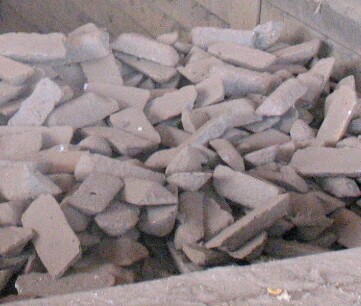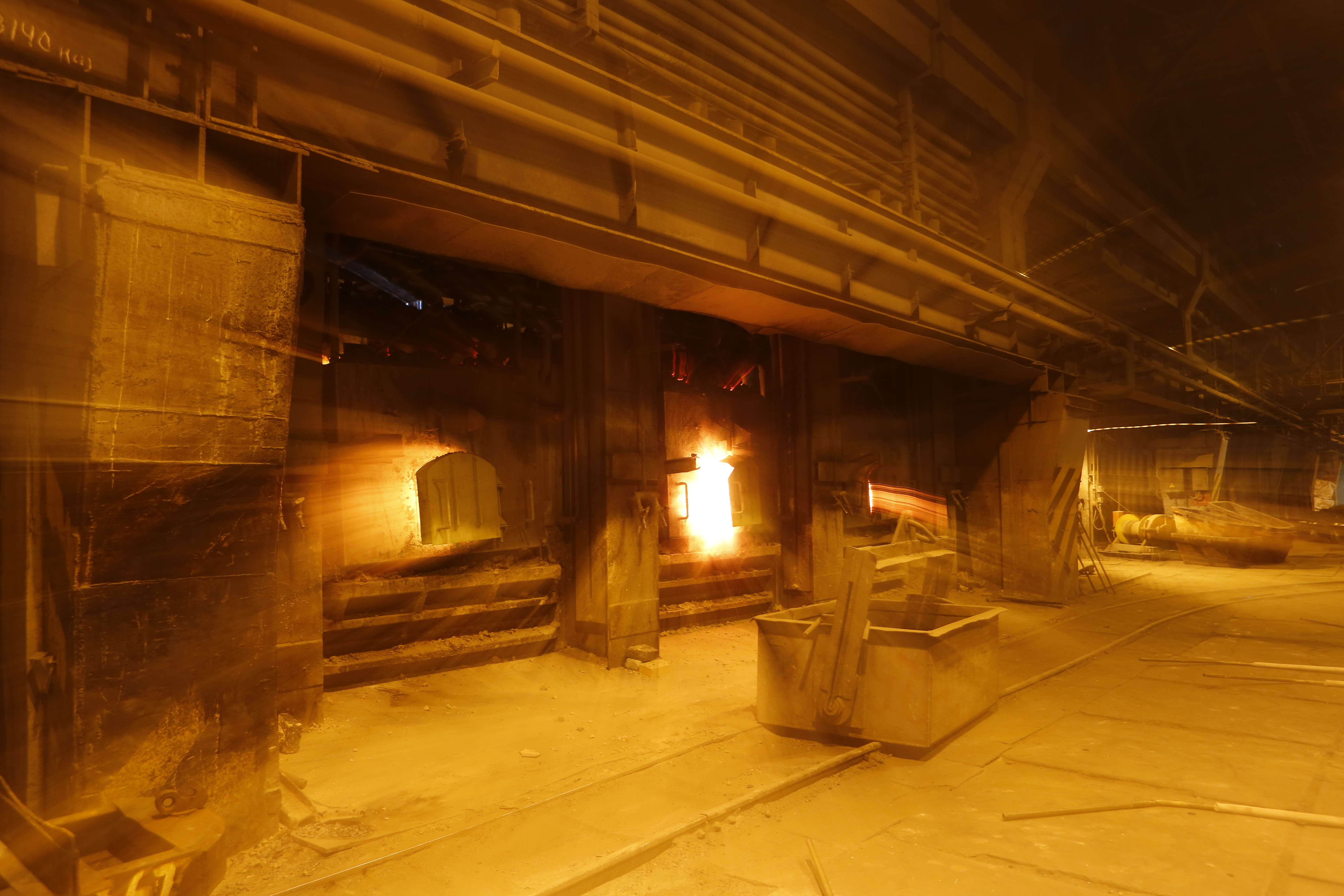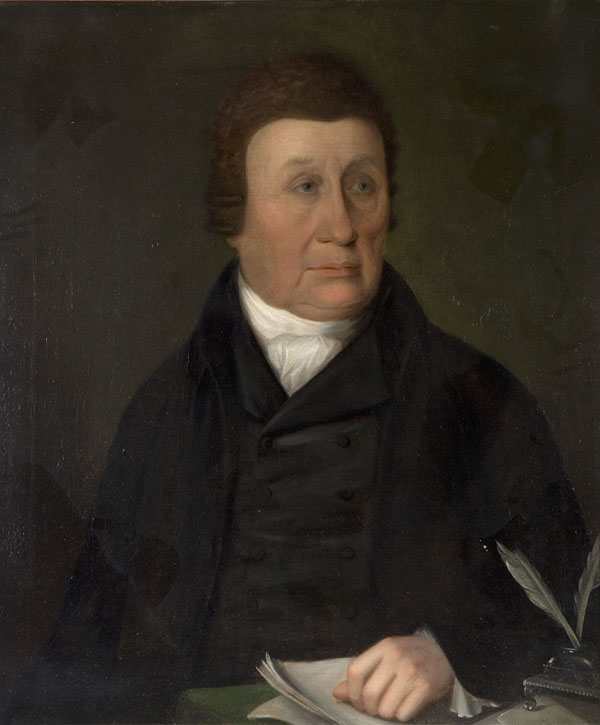|
Potting And Stamping
Potting and stamping is a modern name for one of the 18th-century processes for refining pig iron without the use of charcoal. Inventors The process was devised by Charles Wood of Lowmill, Egremont in Cumberland and his brother John Wood of Wednesbury and patented by them in 1761 and 1763. The process was improved by John Wright and Joseph Jesson of West Bromwich, who also obtained a patent. Process The process involved the melting of pig iron in an oxidising atmosphere. The metal was then allowed to cool, broken up by stamping, and washed. The granulated iron was then heated in pots in a reverberatory furnace. The resultant bloom was then drawn out under a forge hammer in the usual way. Adoption During the 14-year term of the patents, the process was little used except by the inventors. However, from c.1785, shortly before Wright & Jesson's process came out of patent, it seems to have been adopted by many ironmasters in the West Midlands. Professor Charles Hyde argues tha ... [...More Info...] [...Related Items...] OR: [Wikipedia] [Google] [Baidu] |
Pig Iron
Pig iron, also known as crude iron, is an intermediate product of the iron industry in the production of steel which is obtained by smelting iron ore in a blast furnace. Pig iron has a high carbon content, typically 3.8–4.7%, along with silica and other constituents of dross, which makes it brittle and not useful directly as a material except for limited applications. The traditional shape of the molds used for pig iron ingots is a branching structure formed in sand, with many individual ingots at right angles to a central channel or "runner", resembling a litter of piglets being nursed by a sow. When the metal had cooled and hardened, the smaller ingots (the "pigs") were simply broken from the runner (the "sow"), hence the name "pig iron". As pig iron is intended for remelting, the uneven size of the ingots and the inclusion of small amounts of sand cause only insignificant problems considering the ease of casting and handling them. History Smelting and producing wroug ... [...More Info...] [...Related Items...] OR: [Wikipedia] [Google] [Baidu] |
Charcoal
Charcoal is a lightweight black carbon residue produced by strongly heating wood (or other animal and plant materials) in minimal oxygen to remove all water and volatile constituents. In the traditional version of this pyrolysis process, called charcoal burning, often by forming a charcoal kiln, the heat is supplied by burning part of the starting material itself, with a limited supply of oxygen. The material can also be heated in a closed retort. Modern "charcoal" briquettes used for outdoor cooking may contain many other additives, e.g. coal. This process happens naturally when combustion is incomplete, and is sometimes used in radiocarbon dating. It also happens inadvertently while burning wood, as in a fireplace or wood stove. The visible flame in these is due to combustion of the volatile gases exuded as the wood turns into charcoal. The soot and smoke commonly given off by wood fires result from incomplete combustion of those volatiles. Charcoal burns at a higher temper ... [...More Info...] [...Related Items...] OR: [Wikipedia] [Google] [Baidu] |
Charles Wood (ironmaster)
Charles Wood (1702 – October 1774) was an English ironmaster and one of the inventors of the potting and stamping method of making wrought iron from pig iron. Parents Charles Wood was the 7th of 15 children of William Wood of Wolverhampton and his wife Margaret, daughter of Richard Molyneux, an ironmonger in that area. William Wood followed his father-in-law's trade until 1715, when he became an ironmaster too and later entered into a contract to provide copper coinage for Ireland. He was also a projector, floating his business as an ironmaster as a joint stock company at the time of the South Sea Bubble (1720). Later, he sought to develop a new process of ironmaking and to obtain a charter for a "Company of Ironmasters of Great Britain". However the process (carried on at Frizington, Cumberland) produced little iron and he probably died in debt. Career Charles Wood was a partner in some of the businesses, and certainly in the final one. His father's will left him a legacy ... [...More Info...] [...Related Items...] OR: [Wikipedia] [Google] [Baidu] |
Egremont, Cumbria
Egremont is a market town, civil parish and two Wards and electoral divisions of the United Kingdom, electoral wards in Cumbria, England, and Historic counties of England, historically part of Cumberland. It is situated just outside the Lake District National Park, south of Whitehaven and on the River Ehen. The town, which lies at the foot of Uldale Valley and Dent (fell), Dent Fell, has a long industrial heritage including dyeing, weaving and iron ore mining. It had a population of 7,444 in 2001, increasing to 8,194 at the 2011 Census. The town's layout today is much the same as at the time of Richard de Lucy around 1200 with its wide Main Street opening out into the market place. The remains of the Norman dynasty, Norman castle, built in the 12th century, are situated at the southern end of Main Street near the market place. Egremont was granted a charter for a market and annual fair by King Henry III of England, King Henry III in 1266. The resulting annual Crab Fair now ho ... [...More Info...] [...Related Items...] OR: [Wikipedia] [Google] [Baidu] |
Cumberland
Cumberland ( ) is a historic county in the far North West England. It covers part of the Lake District as well as the north Pennines and Solway Firth coast. Cumberland had an administrative function from the 12th century until 1974. From 1974 until 2023, Cumberland lay within Cumbria, a larger administrative area which also covered Westmorland and parts of Yorkshire and Lancashire. In April 2023, Cumberland will be revived as an administrative entity when Cumbria County Council is abolished and replaced by two unitary authorities; one of these is to be named Cumberland and will include most of the historic county, with the exception of Penrith and the surrounding area. Cumberland is bordered by the historic counties of Northumberland to the north-east, County Durham to the east, Westmorland to the south-east, Lancashire to the south, and the Scottish counties of Dumfriesshire and Roxburghshire to the north. Early history In the Early Middle Ages, Cumbria was part of t ... [...More Info...] [...Related Items...] OR: [Wikipedia] [Google] [Baidu] |
John Wood (ironmaster)
John Wood may refer to: Architecture * John Wood, the Elder (1704–1754), English architect * John Wood, the Younger (1728–1782), English architect * J. A. Wood (1837–1910), American architect Education * John Wood (mathematician) (c.1775–1822), American professor of mathematics * John Wood (design theorist) (born 1945), British professor of design * John C. Wood (born 1949), British professor of mathematics * John Cunningham Wood (born 1952), Australian professor of economics * John Wood (activist) (born 1964), education activist, marketing director at Microsoft * Sir John Wood (professor of law) (1932–2014), British law professor Entertainment Acting * John Wood (actor, born 1909), Australian actor * John Wood (actor, born 1946), Australian actor who appeared in the police drama ''Blue Heelers'' * John Wood (English actor) (1930–2011), Shakespearean actor * Mrs. John Wood (1831–1915), British actor * John Wood, birth name of actor John Fortune Other enterta ... [...More Info...] [...Related Items...] OR: [Wikipedia] [Google] [Baidu] |
Wednesbury
Wednesbury () is a market town in Sandwell in the county of West Midlands, England. It is located near the source of the River Tame. Historically part of Staffordshire in the Hundred of Offlow, at the 2011 Census the town had a population of 37,817. History Medieval and earlier The substantial remains of a large ditch excavated in St Mary's Road in 2008, following the contours of the hill and predating the Early Medieval period, has been interpreted as part of a hilltop enclosure and possibly the Iron Age hillfort long suspected on the site. The first authenticated spelling of the name was Wodensbyri, written in an endorsement on the back of the copy of the will of Wulfric Spot, dated 1004. Wednesbury ("Woden's borough") is one of the few places in England to be named after a pre-Christian deity. During the Anglo-Saxon period there are believed to have been two battles fought in Wednesbury, in 592 and 715. According to The ''Anglo-Saxon Chronicle'' there was "a great slaug ... [...More Info...] [...Related Items...] OR: [Wikipedia] [Google] [Baidu] |
Patent
A patent is a type of intellectual property that gives its owner the legal right to exclude others from making, using, or selling an invention for a limited period of time in exchange for publishing an enabling disclosure of the invention."A patent is not the grant of a right to make or use or sell. It does not, directly or indirectly, imply any such right. It grants only the right to exclude others. The supposition that a right to make is created by the patent grant is obviously inconsistent with the established distinctions between generic and specific patents, and with the well-known fact that a very considerable portion of the patents granted are in a field covered by a former relatively generic or basic patent, are tributary to such earlier patent, and cannot be practiced unless by license thereunder." – ''Herman v. Youngstown Car Mfg. Co.'', 191 F. 579, 584–85, 112 CCA 185 (6th Cir. 1911) In most countries, patent rights fall under private law and the patent holder mus ... [...More Info...] [...Related Items...] OR: [Wikipedia] [Google] [Baidu] |
West Bromwich
West Bromwich ( ) is a market town in the borough of Sandwell, West Midlands, England. Historically part of Staffordshire, it is north-west of Birmingham. West Bromwich is part of the area known as the Black Country, in terms of geography, culture and dialect. West Bromwich had a population of 77,997 in the 2011 Census. Initially a rural village, West Bromwich's growth corresponded with that of the Industrial Revolution, owing to the area's natural richness in ironstone and coal, as well as its proximity to canals and railway branches. It led to the town becoming a centre for coal mining, brick making, the iron industry and metal trades such as nails, springs and guns. The town's primary economy developed into engineering, manufacturing and the Automotive industry in the United Kingdom, automotive industry through the early 20th century. During the World War II, Second World War, West Bromwich experienced Birmingham Blitz, bombing from the Luftwaffe, German Luftwaffe. It als ... [...More Info...] [...Related Items...] OR: [Wikipedia] [Google] [Baidu] |
Reverberatory Furnace
A reverberatory furnace is a metallurgical or process furnace that isolates the material being processed from contact with the fuel, but not from contact with combustion gases. The term ''reverberation'' is used here in a generic sense of ''rebounding'' or '' reflecting'', not in the acoustic sense of ''echoing''. Operation Chemistry determines the optimum relationship between the fuel and the material, among other variables. The reverberatory furnace can be contrasted on the one hand with the blast furnace, in which fuel and material are mixed in a single chamber, and, on the other hand, with crucible, muffling, or retort furnaces, in which the subject material is isolated from the fuel and all of the products of combustion including gases and flying ash. There are, however, a great many furnace designs, and the terminology of metallurgy has not been very consistently defined, so it is difficult to categorically contradict other views. Applications and comparison with b ... [...More Info...] [...Related Items...] OR: [Wikipedia] [Google] [Baidu] |
Trip Hammer
A trip hammer, also known as a tilt hammer or helve hammer, is a massive powered hammer. Traditional uses of trip hammers include pounding, decorticating and polishing of grain in agriculture. In mining, trip hammers were used for crushing metal ores into small pieces, although a stamp mill was more usual for this. In finery forges they were used for drawing out blooms made from wrought iron into more workable bar iron. They were also used for fabricating various articles of wrought iron, latten (an early form of brass), steel and other metals. One or more trip hammers were set up in a forge, also known variously as a hammer mill, hammer forge or hammer works. The hammers were usually raised by a cam and then released to fall under the force of gravity. Historically, trip hammers were often powered hydraulically by a water wheel. Trip hammers are known to have been used in Imperial China since the Western Han dynasty. They also existed in the contemporary Greco-Roman world, ... [...More Info...] [...Related Items...] OR: [Wikipedia] [Google] [Baidu] |
Ironmaster
An ironmaster is the manager, and usually owner, of a forge or blast furnace for the processing of iron. It is a term mainly associated with the period of the Industrial Revolution, especially in Great Britain. The ironmaster was usually a large scale entrepreneur and thus an important member of a community. He would have a large country house or mansion as his residence. The organization of operations surrounding the smelting, refining and casting of iron was labour-intensive, and so there would be numerous workers reliant on the furnace works. There were ironmasters (possibly not called such) from the 17th century onwards, but they became more prominent with the great expansion in the British iron industry during the Industrial Revolution. 17th century ironmasters (examples) An early ironmaster was John Winter (Royalist), John Winter (about 1600–1676) who owned substantial holdings in the Forest of Dean. During the English Civil War he cast cannons for Charles I of England ... [...More Info...] [...Related Items...] OR: [Wikipedia] [Google] [Baidu] |


.jpg)




